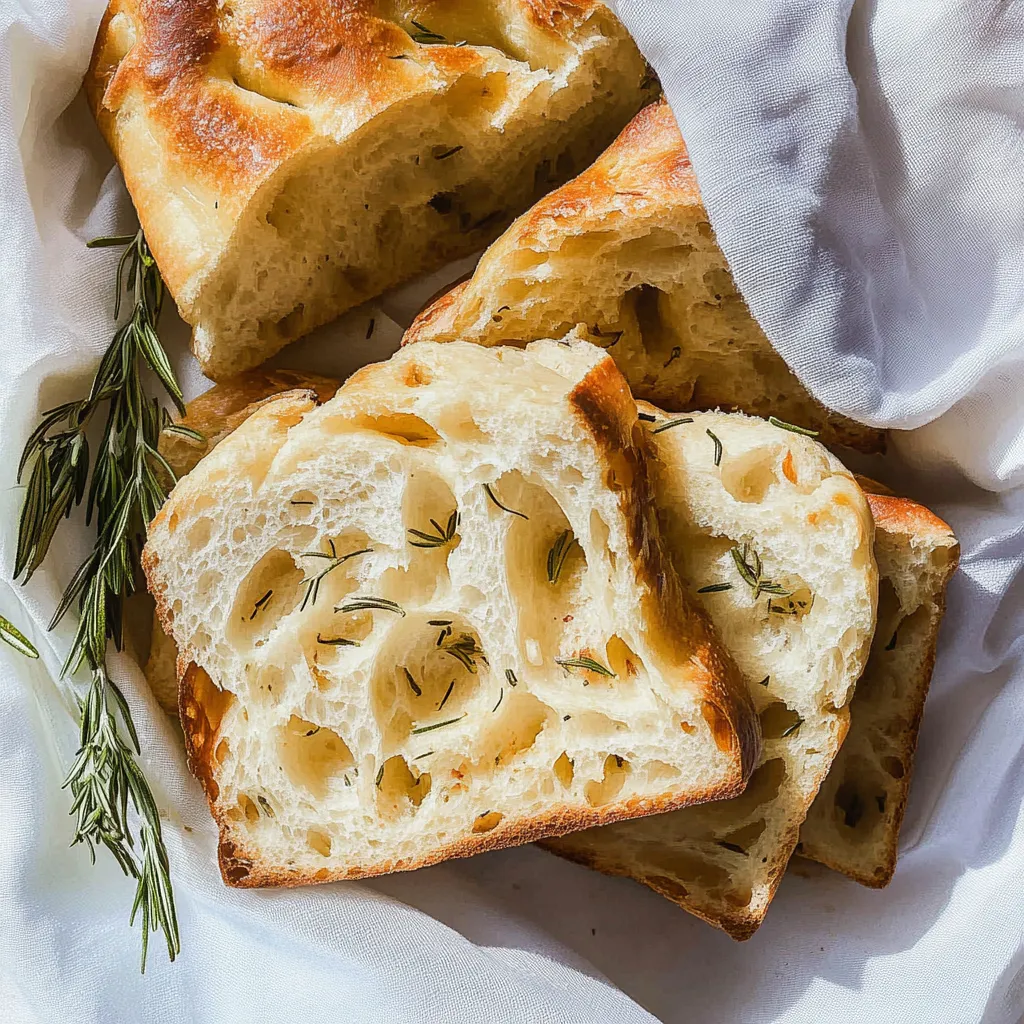The first time I pulled a golden, dimpled focaccia from my oven, the kitchen filled with an amazing aroma. It reminded me of the sun-drenched coast of Italy. What makes focaccia bread special isn’t just its texture—it’s the love and tradition in every bite.
This isn’t just another bread recipe. It’s your chance to dive into a culinary art form perfected over generations. Focaccia is more than food—it’s a link to Italian culture, a canvas for creativity, and a tasty adventure in your kitchen.
Whether you love baking or are new to bread making, this guide will help you make authentic focaccia. It captures the essence of what makes focaccia unique from other flatbreads.
Key Takeaways
- Discover the authentic Italian technique for creating perfect focaccia
- Learn the unique characteristics that distinguish focaccia from other breads
- Understand the cultural significance behind this beloved Italian staple
- Master the art of creating crispy exterior and soft interior
- Explore versatile topping and flavor combinations
Understanding What Makes Focaccia Bread Different
Focaccia is more than just bread. It’s a journey through Italian tradition and flavor. It has unique qualities and a rich cultural background that sets it apart.
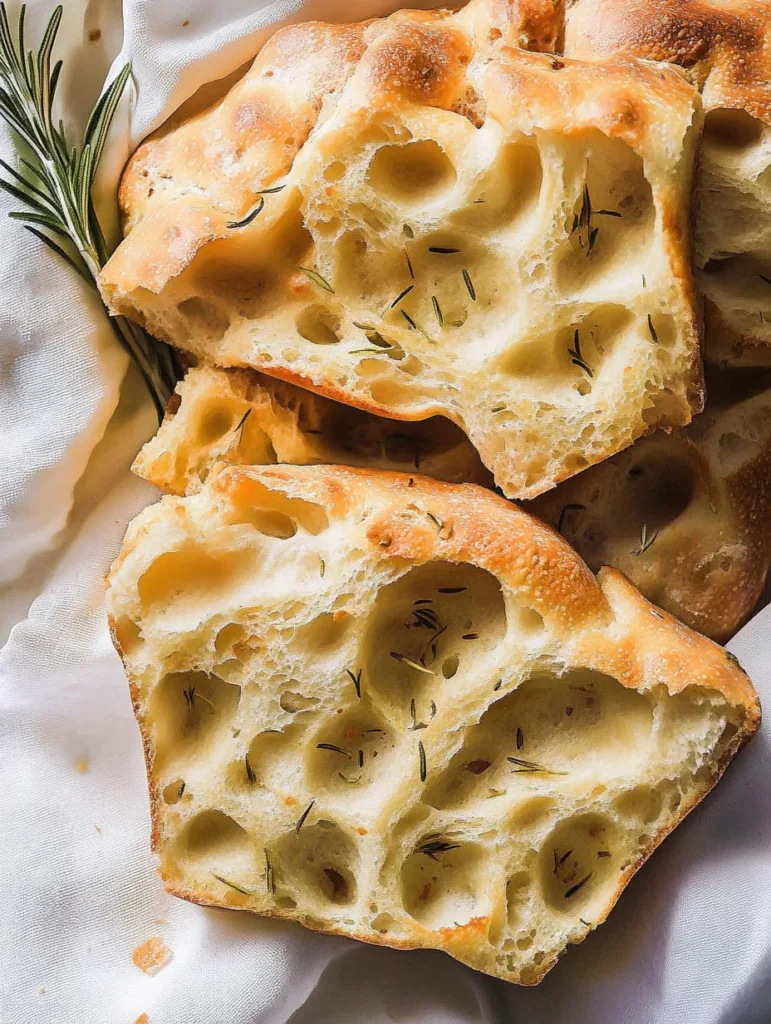
Focaccia is not just a simple bread. It’s a culinary experience that connects you to Italian baking traditions. Its distinctive qualities make it different from regular bread in many ways.
Origins and Traditional Preparation
Focaccia’s roots go back to ancient Rome. Soldiers baked a flatbread called panis focacius on hot stones. Traditional preparation involves:
- Using high-quality olive oil
- Creating distinctive dimpled surface
- Utilizing simple, fresh ingredients
Unique Texture and Flavor Profile
Focaccia’s texture is extraordinary. It has a crispy outside and a soft, airy inside. Its flavor is rich with olive oil, herbs, and sometimes regional ingredients.
| Characteristic | Focaccia | Regular Bread |
|---|---|---|
| Texture | Crispy outside, soft inside | Uniform density |
| Oil Content | High olive oil saturation | Minimal oil |
| Nutritional Density | Rich in healthy fats | Basic carbohydrate profile |
Regional Italian Variations
Is focaccia healthier than regular bread? It depends on how it’s made. Different Italian regions have their own focaccia, each with its own nutritional benefits:
- Liguria: Thin, crispy with sea salt
- Puglia: Thick, potato-infused version
- Sicily: Topped with herbs and local ingredients
“Focaccia is not just bread, it’s a canvas of regional culinary art” – Italian Food Historian
While focaccia may have more calories due to olive oil, it’s packed with nutrients. It offers a more satisfying eating experience than regular bread.
Essential Ingredients for Perfect Focaccia
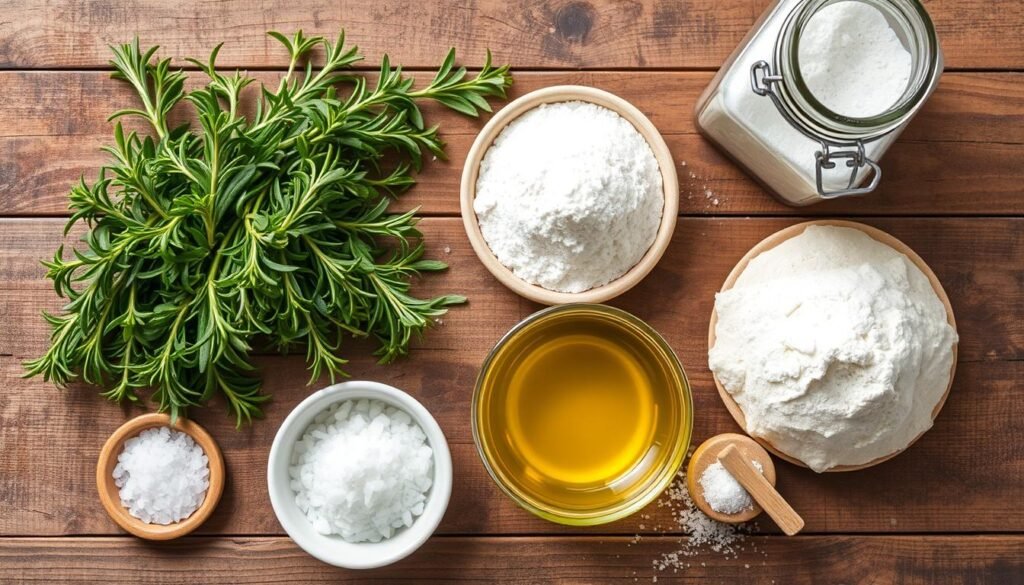
Knowing the main ingredients in focaccia is key to making a true Italian bread. It’s all about the simple, yet chosen ingredients. They come together to create a bread that’s both tasty and textured.
Let’s look at the main ingredients that make focaccia special:
- High-protein flour: The base of any focaccia
- Extra virgin olive oil: Adds rich flavor and keeps it moist
- Active dry yeast: Makes it light and airy
- Sea salt: Boosts the flavor
- Warm water: Helps mix the ingredients together
Choosing the right flour is crucial. Bakers suggest using bread flour or tipo 00 flour. They have more protein, which makes focaccia chewy yet soft.
“The secret to great focaccia is quality ingredients and respect for traditional techniques.” – Italian Baking Masters
Olive oil is vital in focaccia. You need extra virgin olive oil for its authentic Mediterranean taste. It also makes the bread’s outside crispy and golden.
Adding fresh herbs like rosemary or thyme can take your focaccia to the next level. They add depth and a nice aroma to your bread.
Necessary Tools and Equipment
Baking focaccia is more than just using great ingredients. The right tools can make a big difference. They help you make focaccia that tastes like it came from a restaurant.
Essential Baking Tools for Focaccia
Here are the key tools you’ll need:
- Large mixing bowl
- Measuring cups and spoons
- Digital kitchen scale
- Dough scraper
- Silicone spatula
- Plastic wrap or kitchen towel
Optional but Helpful Baking Equipment
Some extra tools can make your focaccia even better:
- Stand mixer with dough hook
- Baking stone
- Instant-read thermometer
- Pastry brush
- Proofing basket
Selecting the Perfect Baking Pan
Choosing the right pan is key for authentic focaccia. Look for these features:
- Material: Aluminum or steel sheet pans are best
- Size: A 9×13 inch pan is recommended
- Depth: A shallow pan with 1-2 inch sides is ideal
“The right pan can make or break your focaccia texture and crust.” – Professional Baker’s Tip
Your pan should spread heat evenly. This helps the dough get a crispy bottom and a soft inside. Choosing the right pan is as important as picking the best flour.
Preparing the Perfect Focaccia Dough
Making a great focaccia starts with knowing its main ingredients and how to prepare the dough. The key ingredients are high-quality flour, active dry yeast, water, olive oil, and salt.
- Use bread flour for the best texture and structure
- Make sure your water is lukewarm (around 110°F) to activate the yeast
- Choose a high-quality extra virgin olive oil for authentic flavor
“The secret to great focaccia is in the simplicity of its ingredients and the care in preparation.” – Italian Baking Tradition
The dough’s consistency is key. It should be soft, slightly sticky, and well-hydrated. Knead the dough until it’s smooth and elastic. This usually takes about 8-10 minutes by hand or 5-6 minutes in a stand mixer.
| Ingredient | Quantity for Standard Focaccia | Purpose |
|---|---|---|
| Bread Flour | 3 cups | Provides structure and protein |
| Water | 1 1/4 cups | Hydrates and activates yeast |
| Olive Oil | 1/4 cup | Adds flavor and softness |
| Active Dry Yeast | 2 1/4 teaspoons | Enables dough to rise |
| Salt | 1 1/2 teaspoons | Enhances overall flavor |
Pro tip: Let your dough rest and rise in a warm, draft-free area. The first rise takes 1-2 hours, during which the dough should double in size. This patience develops deeper flavors and creates the soft, airy texture that makes focaccia so loved.
Mastering the Art of Focaccia Bread
Focaccia bread is special because of how it’s made. To make great focaccia, you need to learn certain skills. These skills turn simple ingredients into a delicious Italian bread.
Proper Kneading Techniques
Kneading focaccia dough is all about gentle moves. You want to build gluten but keep the dough soft. Use your heel to push and fold the dough, making it smooth and elastic. Knead for 8-10 minutes to get the dough just right.
- Work the dough on a clean, lightly floured surface
- Press and stretch using rhythmic motions
- Rotate the dough periodically for even development
- Stop when the dough feels smooth and springs back when pressed
Dimpling and Shaping Methods
The dimpled surface is what makes focaccia unique. After it rises, use your fingers to make small wells on the dough. These wells hold olive oil and herbs, adding flavor.
Adding Signature Toppings
Focaccia can have many toppings. Some favorites include:
| Topping Category | Popular Choices |
|---|---|
| Herbs | Rosemary, thyme, oregano |
| Vegetables | Cherry tomatoes, olives, caramelized onions |
| Cheese | Parmesan, sea salt flakes |
Don’t forget to drizzle olive oil before baking. It makes the bread golden and crispy.
Proofing and Rising Tips for Best Results
Mastering the proofing process is key for making focaccia bread. Unlike regular bread, focaccia needs special care to get its unique texture and taste. The proofing method is important for its nutritional value.
Understanding the rising process is crucial for perfect focaccia. You need to create the right environment for your dough. This allows it to develop complex flavors and the right texture. Temperature and humidity are key for successful proofing.
- Maintain a consistent warm temperature between 75-80°F
- Cover the dough with a damp cloth to prevent drying
- Allow sufficient time for double rising
Is focaccia healthier than regular bread? The proofing process can make it healthier. Longer fermentation breaks down gluten and makes nutrients easier for your body to use.
| Proofing Method | Time | Benefits |
|---|---|---|
| Single Rise | 1-2 hours | Quick preparation, lighter texture |
| Double Rise | 4-6 hours | Enhanced flavor, improved digestibility |
“The secret to great focaccia is patience during the proofing process.” – Italian Baking Experts
Pro tip: Your dough is ready when it has doubled in size and springs back gently when touched. Don’t rush the process! Proper proofing turns simple ingredients into a delicious, potentially healthier bread option.
Baking Techniques for Golden-Brown Perfection
Making the perfect focaccia is all about mastering baking. The right methods can turn your bread into something amazing. This is true, no matter what flour you use.
Precision in Oven Temperature
Your oven’s temperature is key for that golden crust. Preheat it to 425°F (218°C) for the best results. Remember, different flours might change baking times, so watch your bread closely.
Visual Doneness Indicators
- Golden-brown edges that are crisp and slightly raised
- Uniform color across the surface
- Slight resistance when gently pressed
- Aromatic smell of freshly baked bread
Cooling and Storage Secrets
Let your focaccia cool on a wire rack for 15-20 minutes after baking. This keeps the bottom from getting soggy. Pro tip: Wrap cooled focaccia in parchment paper to keep it fresh.
“The secret to great focaccia lies not just in the ingredients, but in the baking technique.” – Italian Baking Maestro
Flour Selection Matters
Choosing the right flour is crucial. High-protein bread flour or Italian-style flour is best. They give your focaccia that perfect chewy, airy texture.
| Flour Type | Protein Content | Baking Performance |
|---|---|---|
| Bread Flour | 12-14% | Excellent rise, chewy texture |
| All-Purpose Flour | 10-12% | Good, but less structured |
| Italian-Style Flour | 11-13% | Authentic focaccia texture |
Popular Focaccia Variations and Toppings
Exploring focaccia bread reveals its wide variety of toppings and regional styles. This bread is a blank canvas for creativity, offering more than just traditional recipes.
- Focaccia di Recco: A Ligurian specialty with thin dough and soft cheese inside
- Focaccia Barese: From Puglia, topped with cherry tomatoes and herbs
- Rosemary and sea salt classic version
- Grape-studded focaccia from Tuscany
Toppings are key to what makes focaccia special. You can try both classic and new ingredients:
- Fresh herbs like basil, thyme, and oregano
- Roasted vegetables
- Caramelized onions
- Olives and sun-dried tomatoes
- Artisanal cheeses
“Focaccia is not just bread, it’s a culinary adventure waiting to be explored!” – Italian Bread Masters
Today, focaccia goes beyond its traditional form. Chefs and home bakers make sweet focaccia with fruits, savory versions with meats, and even breakfast focaccia with eggs and bacon.
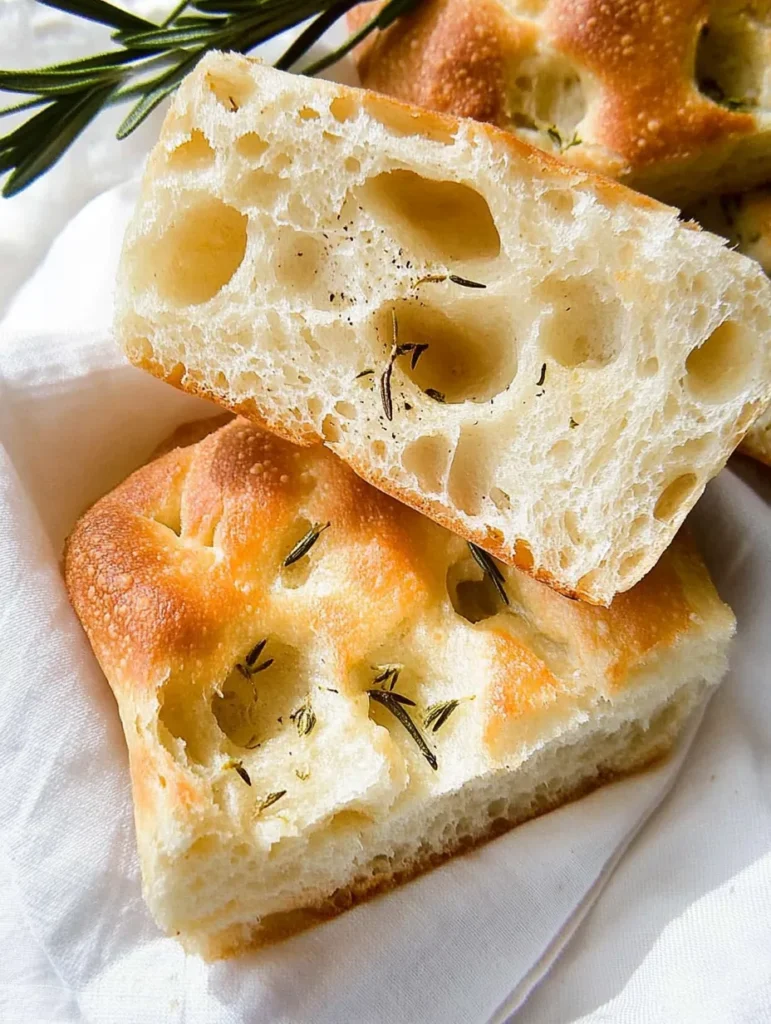
Conclusion
Making focaccia bread is an art that uses simple ingredients like flour, olive oil, salt, and yeast. You’ve learned how to make this tasty Italian bread at home. The ingredients are the base of a delicious, golden-brown bread that will wow everyone.
Your focaccia-making journey is just starting. With each bake, you’ll get better and understand this bread more. Try different toppings like rosemary, cherry tomatoes, or caramelized onions to make it your own. Focaccia is all about being adaptable and adding your personal touch.
Remember, patience is crucial in bread making. Proper kneading and letting the dough rise are key to its texture and taste. Start with the basic recipe and then try new variations and techniques. As you bake more, you’ll become a focaccia expert.
Keep trying, stay curious, and enjoy making homemade focaccia. Your kitchen will soon be filled with the amazing smell of freshly baked bread. It’s a taste of Italian culinary tradition.
FAQ
What makes focaccia bread different from other breads?
Focaccia is known for its dimpled surface and extra virgin olive oil. It has a crispy outside and soft inside. The indentations on the bread hold olive oil and toppings.
Unlike other breads, focaccia is flatter and has a more airy crumb. This makes it unique compared to traditional loaves.
Is focaccia healthier than regular bread?
Focaccia can be healthier, depending on how it’s made. The olive oil in it is good for your heart. Using whole grain flour adds more nutrients and fiber.
But, focaccia is still high in calories and carbs. Its healthiness depends on the ingredients and how much you eat. Adding veggies and using whole wheat flour can make it healthier.
What are the main ingredients in focaccia?
Classic focaccia includes flour, yeast, olive oil, water, and salt. It often has fresh herbs, garlic, or olives too. The quality of the olive oil is key for its taste and texture.
What is the best flour for focaccia bread?
The best flour is high-protein bread flour or “00” flour. Many use a mix of bread and all-purpose flour for the best taste and texture. Whole wheat flour is a healthier option, making the bread denser and more nutritious.
How long does focaccia bread stay fresh?
Eat focaccia within 1-2 days for the best taste. Store it in a paper bag or bread box at room temperature. Avoid plastic to keep the crust crispy.
To keep it longer, freeze focaccia for up to a month. Wrap it in plastic and then foil before freezing.
Can I make focaccia without a stand mixer?
Yes, you can make focaccia by hand. It might take more effort and time. But, traditional focaccia was made without electric mixers.
The key is to knead the dough well to develop the gluten. This takes patience and proper kneading techniques.
Are there gluten-free options for focaccia?
Yes, you can make gluten-free focaccia. Use flours like almond, rice, or gluten-free mixes. These need different liquids and binders like xanthan gum.
While it might not taste exactly like traditional focaccia, you can make delicious gluten-free versions with the right ingredients and techniques.
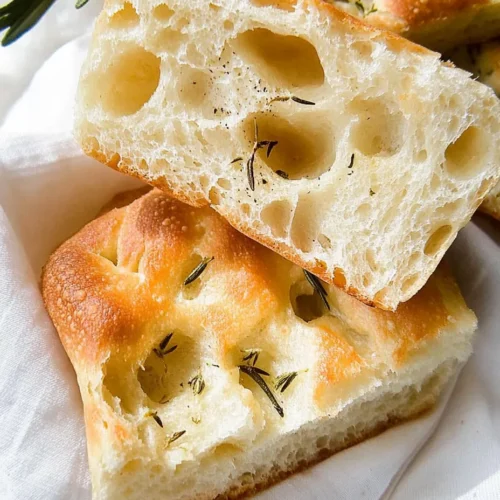
Authentic Focaccia Bread
Ingredients
- 3 cups Bread flour Can substitute with tipo 00 flour
- 1 1/4 cups Warm water Around 110°F 43°C
- 2 1/4 tsp Active dry yeast
- 1/4 cup Extra virgin olive oil Plus extra for drizzling
- 1 1/2 tsp Sea salt
- 1-2 tbsp Fresh rosemary Optional for topping
- 1 tsp Flaky sea salt Optional for topping
Instructions
- Activate the yeast: In a small bowl, mix warm water and yeast. Let it sit for 5-10 minutes until frothy.
- Mix the dough: In a large bowl, combine flour and salt. Add the yeast mixture and olive oil. Mix until a shaggy dough forms.
- Knead the dough: Turn the dough onto a floured surface and knead for 8-10 minutes until smooth and elastic.
- First rise: Place the dough in a lightly oiled bowl, cover with a damp cloth, and let it rise for 1-2 hours until doubled in size.
- Shape the dough: Transfer the dough to a greased 9×13 inch baking pan. Gently stretch it to fit the pan.
- Dimple the dough: Use your fingers to press deep dimples into the dough. Drizzle generously with olive oil.
- Second rise: Cover the dough and let it rise for another 30-60 minutes.
- Preheat the oven: Preheat to 425°F (218°C).
- Add toppings: Sprinkle with fresh rosemary and flaky sea salt (or other desired toppings).
- Bake: Bake for 20-25 minutes until golden brown.
- Cool: Let the focaccia cool on a wire rack for 15-20 minutes before serving.
Notes
- For a crispier crust, place a baking stone or sheet pan in the oven while preheating.
- Experiment with toppings like cherry tomatoes, olives, caramelized onions, or herbs.
- Store leftovers in a paper bag at room temperature for up to 2 days or freeze for longer storage.

